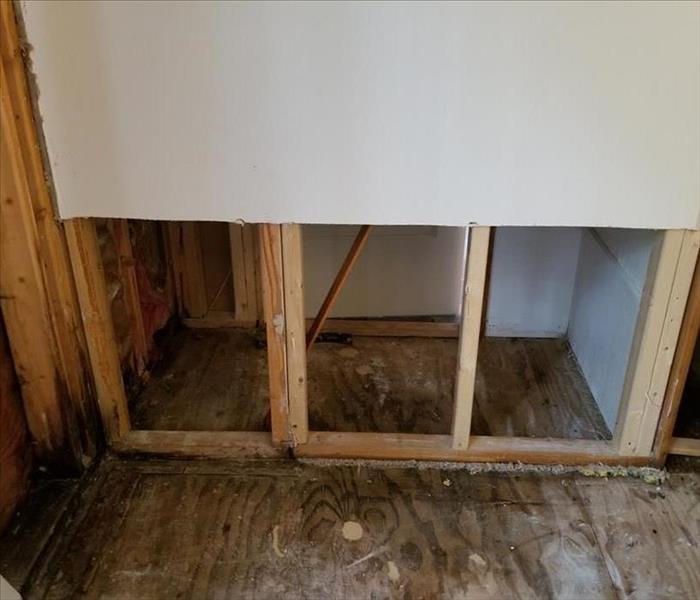What Is a Flood Cut?
3/20/2022 (Permalink)
 Indoor flooding can cause multiple potentially serious issues. Begin drying immediately to minimize as much damage as possible.
Indoor flooding can cause multiple potentially serious issues. Begin drying immediately to minimize as much damage as possible.
What Exactly Is A Flood Cut?
When your Chilton, TX, building floods, whether a result of heavy rainfall, a burst pipe or another type of disaster, flood cleanup must begin immediately. Flooding can lead to numerous problems (e.g., contamination, mold growth) to various materials and surfaces, even drywall. Drywall will probably require you or storm damage cleanup professionals to perform a flood cut because water can soak in and through it, making it impossible to dry. This can shortly lead to mold growth.
Here's how to complete a flood cut:
- Remove Excess Water First, you'll need to stop the water flow and extract all of the standing water. Drywall soaks up water, so the water will wick up and through the wall. This means you'll also need to remove water-soaked carpet and padding and clear the affected area as much as possible to reduce humidity.
- Shut Off Electricity Turn off electricity at the breaker box and remove electrical outlets that were not affected by moisture. Any outlets that have been exposed to water should be removed and disposed of.
- Measure Then, you'll need to determine how much drywall to remove. If the water level was less than two-and-a-half feet, you need to cut out the drywall to a height of four feet. A higher water level than two-and-a-half feet requires a tear out at the height of eight feet.
- Cut and Remove Drywall Using chalk, mark a straight line where you're going to cut above the line of the flooding. With a utility knife, cut about half-way through the drywall's thickness. Carefully loosen and remove this piece. Then, remove all of the insulation behind it.
- Dry the Area When all of the affected material is removed, you can use fans, blowers and dehumidifiers to dry the area.
Indoor flooding can cause multiple potentially serious issues. Begin drying immediately to minimize as much damage as possible.



 24/7 Emergency Service
24/7 Emergency Service